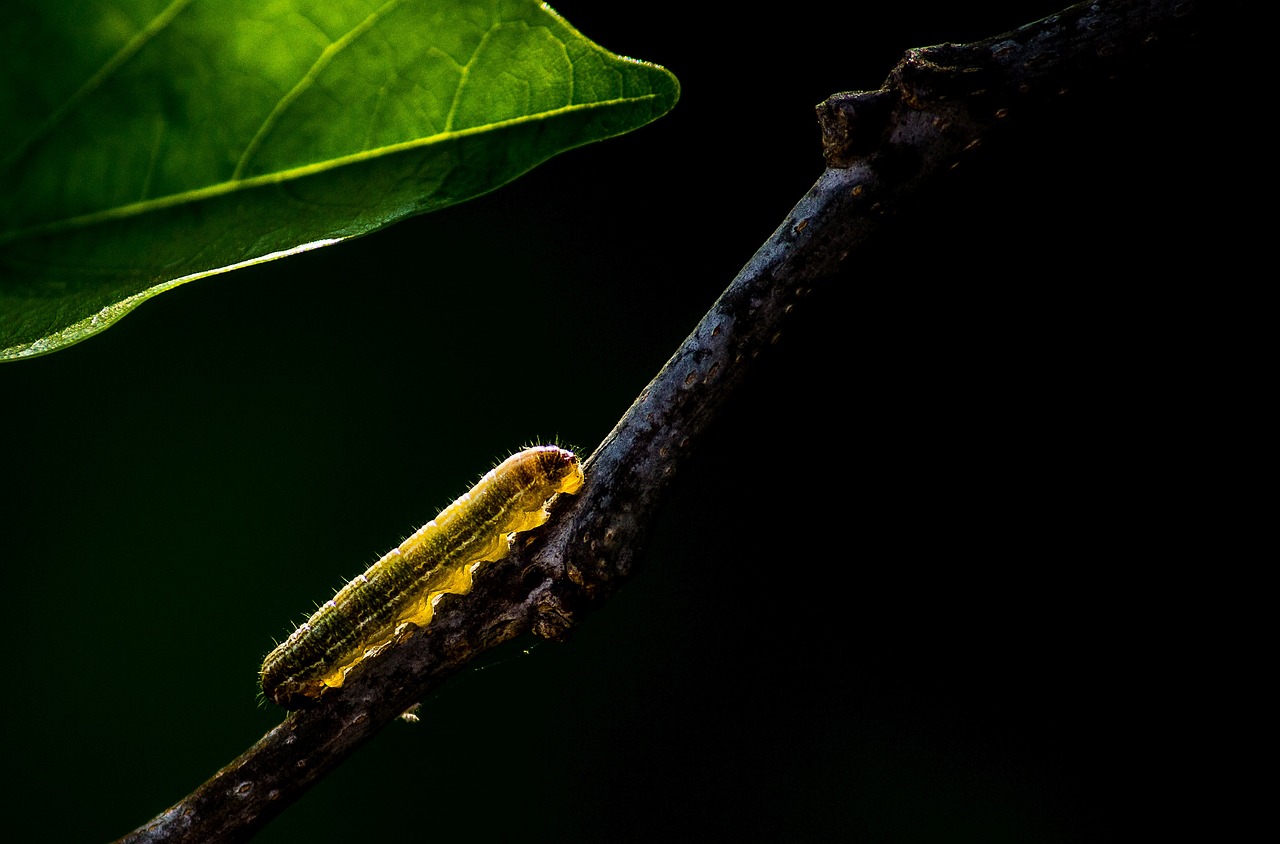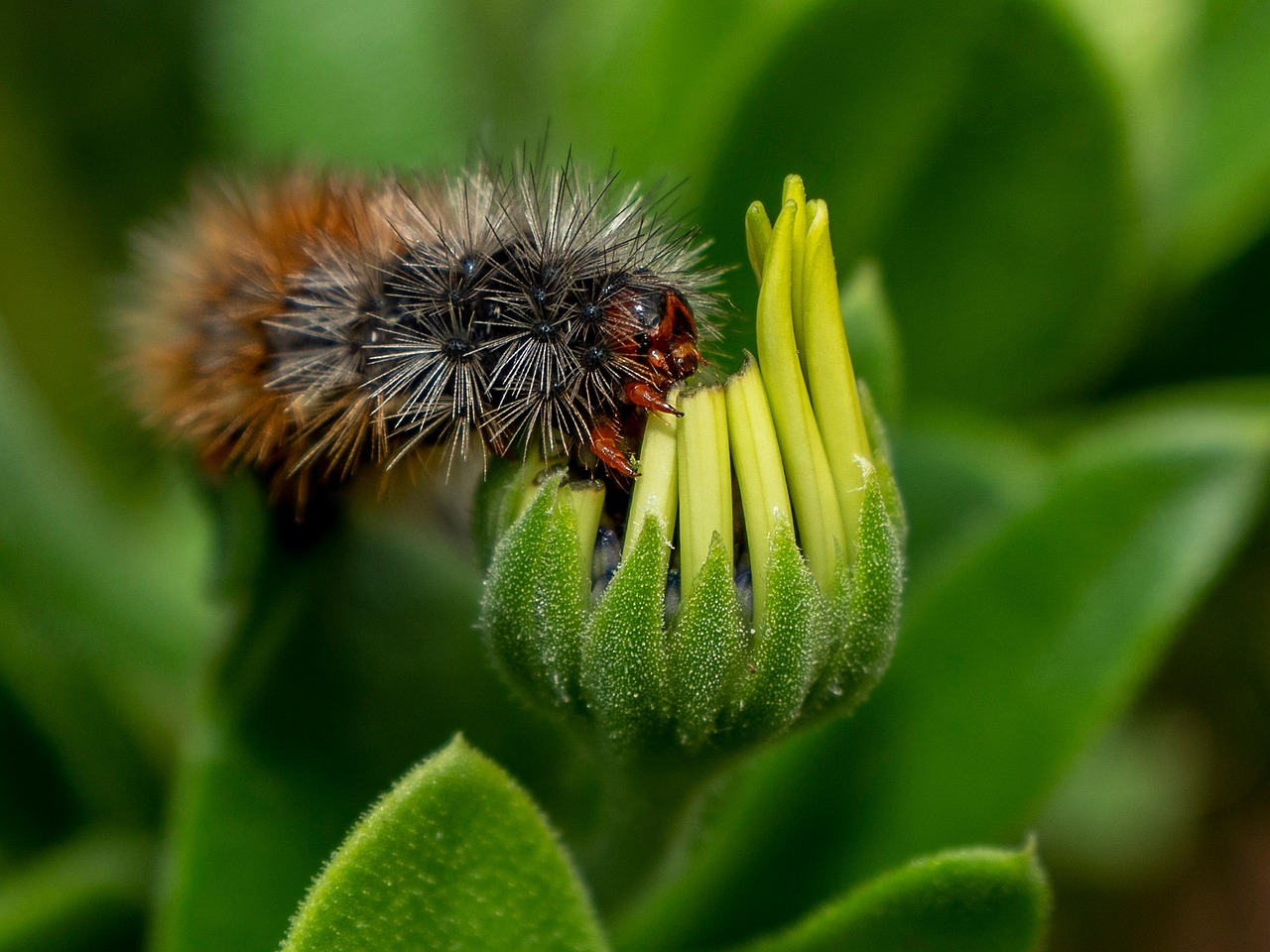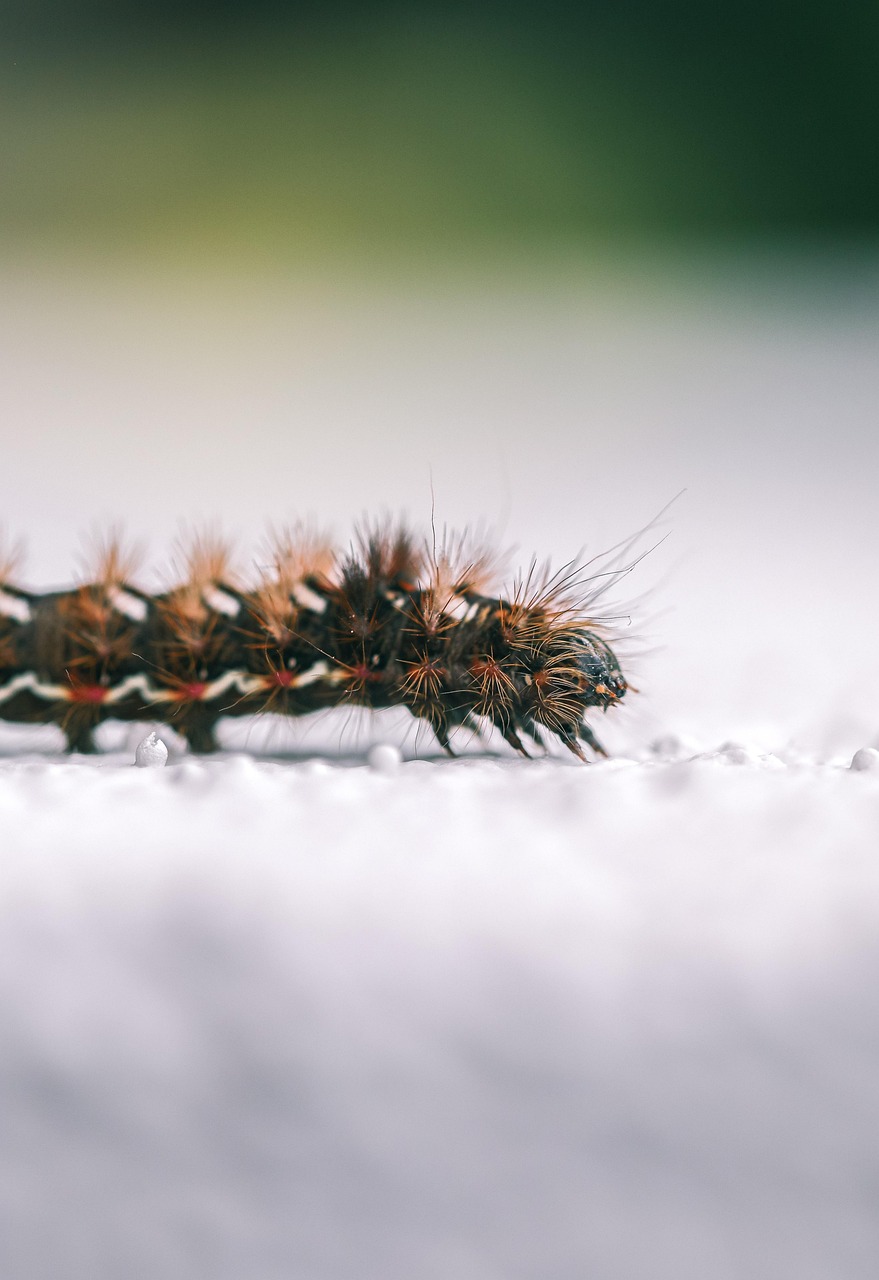Black and brown caterpillars are fascinating creatures that often capture the attention of nature enthusiasts. These common critters can be found in various habitats, and understanding their characteristics is essential for identifying them in the wild.
Caterpillars are the larval stage of moths and butterflies, playing a crucial role in the ecosystem. They serve as food for numerous predators and contribute to the pollination process as they transform into adult insects. Black and brown caterpillars, in particular, can be intriguing due to their diverse appearances and behaviors.

While many people can recognize a caterpillar, not everyone knows that these larvae can vary significantly in color, shape, and size. The black and brown varieties often blend into their surroundings, making them harder to spot. Their coloration helps them avoid predators, as they can easily camouflage themselves among leaves, bark, and soil.
Understanding Black and Brown Caterpillars
There are several species of caterpillars that display black or brown coloring. Identifying these insects involves looking at their physical features, habits, and the plants they inhabit. Here are some key characteristics and facts about black and brown caterpillars:
| Species | Coloration | Host Plants | Transformation |
|---|---|---|---|
| Black Swallowtail | Black with yellow spots | Carrots, parsley, dill | Transforms into a black swallowtail butterfly |
| Hickory Horned Devil | Greenish-black with blue and orange markings | Hickory, walnut, sweetgum trees | Becomes a regal moth |
| Cabbage Looper | Dark brown to black | Cabbage, kale, broccoli | Turns into a moth of the Noctuidae family |
The table above highlights some common black and brown caterpillar species. Each species has distinct host plants that cater to their dietary needs. Understanding these associations is crucial for gardeners and nature lovers alike.
Another interesting aspect of these caterpillars is their behavior. Many black and brown caterpillars exhibit unique habits that aid in their survival. For example, some may sway back and forth on a twig to mimic the movement of leaves in the wind. This motion can help them avoid detection by predators.
In addition to camouflage and behavioral tactics, caterpillars may possess other forms of defense. Some species have spines or hairs that can deter potential threats. These adaptations not only protect them during their larval stage but also play a significant role in their transformation into adult moths or butterflies.
As they grow, caterpillars will shed their skin multiple times, a process known as molting. This growth phase is critical as they prepare for the next stage of their life cycle. Understanding the molting process can provide insights into how these creatures thrive in various environments.
The life cycle of a caterpillar is an incredible journey that captivates many observers. From egg to larva, then to pupa, and finally to an adult butterfly or moth, each stage has its own challenges and adaptations. Observing black and brown caterpillars during this transition can be a rewarding experience for nature enthusiasts.
Identifying Black and Brown Caterpillars
To appreciate these fascinating insects, it is essential to know how to identify black and brown caterpillars. Several features can assist in distinguishing between species. Observing specific characteristics can provide valuable clues.
Physical Characteristics
When trying to identify a caterpillar, take note of the following physical traits:
- Color Patterns: Black and brown caterpillars can exhibit various patterns. Some may have stripes, spots, or even unique markings that help differentiate them from one another.
- Body Shape: The shape of the body can vary. Some caterpillars may be slender, while others appear more robust or even spiny.
- Size: Size can range significantly among species. Measuring the length of the caterpillar can aid in identification.
- Hairs and Spines: Certain caterpillars have noticeable hairs or spines which can serve as a defense mechanism. Observing these features can help in recognizing specific species.
Behavioral Traits
In addition to physical characteristics, behavioral traits offer further insights into identification. Different species may display unique behaviors, such as:
- Feeding Habits: Some caterpillars are picky eaters, preferring specific plants. Observing what they consume can help narrow down the species.
- Movement Patterns: While some caterpillars crawl slowly, others may exhibit rapid movements or unique swaying patterns.
- Cocoon Building: Certain species spin cocoons using silk. Noticing whether a caterpillar constructs a cocoon can be indicative of its species.
Common Black and Brown Caterpillar Species

Several notable black and brown caterpillar species inhabit various regions. Here are a few commonly observed ones:
- Black Swallowtail Caterpillar: This caterpillar is recognizable by its green body adorned with black and yellow spots. It primarily feeds on plants like parsley and dill.
- Cabbage Looper: Characterized by its dark brown color, this caterpillar is known for its looping movement. It primarily consumes cabbage and other cruciferous vegetables.
- Fall Armyworm: Typically brown with lighter stripes, this caterpillar can cause significant damage to crops. It is versatile in its diet, feeding on various types of grass.
- Hickory Horned Devil: Known for its striking appearance, this caterpillar has a greenish-black coloration with distinctive horn-like projections. It feeds on hickory and walnut trees.
Each of these species plays a role in their respective ecosystems. Understanding their habits and habitats can enhance appreciation for these remarkable insects.
The Role of Black and Brown Caterpillars in the Ecosystem

Caterpillars, including black and brown varieties, play vital roles within their ecosystems. Their presence influences various ecological processes:
- Food Source: Caterpillars serve as a significant food source for birds, small mammals, and other predators. Their abundance can impact food webs.
- Pollination: As they transition into adult butterflies or moths, these insects contribute to pollination efforts. This process is vital for many flowering plants.
- Soil Health: When caterpillars feed on leaves and plants, they promote new growth, contributing to soil health and plant diversity.
Their role as herbivores is crucial for maintaining balance within their environments. By understanding their ecological significance, we can better appreciate the importance of conserving these creatures and their habitats.

Conservation of Black and Brown Caterpillars
Protecting black and brown caterpillars is essential for maintaining ecological balance. As their habitats face various threats, understanding conservation efforts becomes increasingly important.
Threats to Caterpillar Populations
Several factors threaten the survival of caterpillar populations. Awareness of these threats can help in developing appropriate conservation strategies. Common threats include:
- Habitat Loss: Urbanization, deforestation, and agricultural expansion reduce the natural habitats of caterpillars, limiting their food sources and breeding grounds.
- Pesticide Use: The widespread use of pesticides in agriculture can kill not only harmful insects but also beneficial caterpillars, disrupting the ecosystem.
- Climate Change: Changes in temperature and weather patterns can affect the lifecycle of caterpillars, altering their feeding habits and reproduction cycles.
- Invasive Species: Non-native plants and animals can outcompete local flora and fauna, making it difficult for native caterpillar species to thrive.
Conservation Strategies
Implementing effective conservation strategies is crucial for protecting black and brown caterpillars. Here are some approaches that can be taken:
- Habitat Restoration: Restoring natural habitats by planting native vegetation can provide essential food sources for caterpillars and other insects.
- Reducing Pesticide Usage: Promoting organic farming practices helps minimize harmful pesticide applications, allowing caterpillars to thrive without chemical exposure.
- Creating Awareness: Educating the public about the importance of caterpillars and their roles in the ecosystem can foster support for conservation efforts.
- Monitoring Populations: Conducting research and monitoring caterpillar populations can help identify trends and inform conservation strategies as needed.
Engaging with Caterpillar Conservation
Individuals can play an active role in caterpillar conservation. Engaging in community efforts and personal initiatives can make a significant impact.
Community Involvement
Joining local conservation groups or initiatives focused on preserving butterfly and moth habitats can amplify individual efforts. Community involvement may include:
- Planting Native Gardens: Creating gardens with native plants attracts butterflies and provides food for caterpillars.
- Participating in Citizen Science: Contributing to citizen science projects that track caterpillar sightings helps researchers gather valuable data for conservation.
- Hosting Educational Workshops: Organizing or attending workshops about caterpillar identification, conservation, and gardening can raise awareness and promote action.
Home Conservation Practices
At home, individuals can adopt practices that support caterpillar populations. Simple changes can have a lasting impact:
- Avoid Chemical Treatments: Refraining from using pesticides in gardens allows caterpillars and other beneficial insects to flourish.
- Create Wildlife Habitats: Leaving areas of the yard undisturbed provides shelter for caterpillars during their growth stages.
- Educate Family and Friends: Sharing knowledge about the importance of caterpillars can inspire others to take action in their own communities.
By embracing these practices, individuals can contribute to the conservation of black and brown caterpillars, ensuring their survival for future generations. Engaging with nature at this level enriches our understanding of these remarkable creatures while promoting biodiversity in our environments.
The Importance of Biodiversity and Caterpillar Conservation
Maintaining biodiversity is crucial for the health of our planet. Caterpillars, including black and brown varieties, play a significant role in this ecosystem. By supporting caterpillar populations, we contribute to the overall health of the environment. Their presence indicates a balanced ecosystem and supports various species within food webs.
Additionally, caterpillars serve as indicators of environmental changes. Monitoring their populations can provide insights into the health of ecosystems. Changes in their numbers may signal shifts in habitat quality or climate conditions, making them valuable for ecological research and conservation efforts.
Encouraging Kids and Families to Engage with Nature
Engaging children and families with nature can foster a love for wildlife and promote conservation efforts. Here are some ways to encourage young ones to appreciate black and brown caterpillars:
- Nature Walks: Organizing family nature walks can help children learn about caterpillars in their natural habitats while enjoying outdoor activities.
- Craft Projects: Creating art projects based on caterpillars can stimulate creativity while educating children about their life cycles and importance.
- Gardening Together: Involving kids in gardening can teach them about plants that attract caterpillars and butterflies, fostering a sense of responsibility for nature.
These activities not only educate but also create lasting memories that inspire future generations to care for the environment. Instilling a sense of stewardship in children is vital for the longevity of conservation efforts.
Final Thoughts
Black and brown caterpillars are more than just common critters; they are integral components of our ecosystems. Understanding their role in nature enhances our appreciation for these fascinating creatures. As they transform into butterflies and moths, they contribute to pollination and serve as food for various species, thus maintaining ecological balance.
The threats these caterpillars face highlight the need for active conservation measures. By taking steps to protect their habitats and reduce pesticide use, everyone can contribute to the preservation of these important insects. Engaging communities, families, and individuals fosters a collective effort towards conservation.
As we learn more about the life cycles and behaviors of black and brown caterpillars, we become better equipped to advocate for their protection. The journey from caterpillar to butterfly is a remarkable transformation that symbolizes hope and renewal in nature. By championing these creatures, we ensure that future generations will also have the opportunity to marvel at their beauty and understand their significance in our ecosystems.
In conclusion, let us embrace our role as stewards of the environment. Supporting black and brown caterpillars not only benefits the species themselves but also enriches our own lives by promoting biodiversity and ecological health. Together, we can make a difference for these common critters and the world they inhabit.
